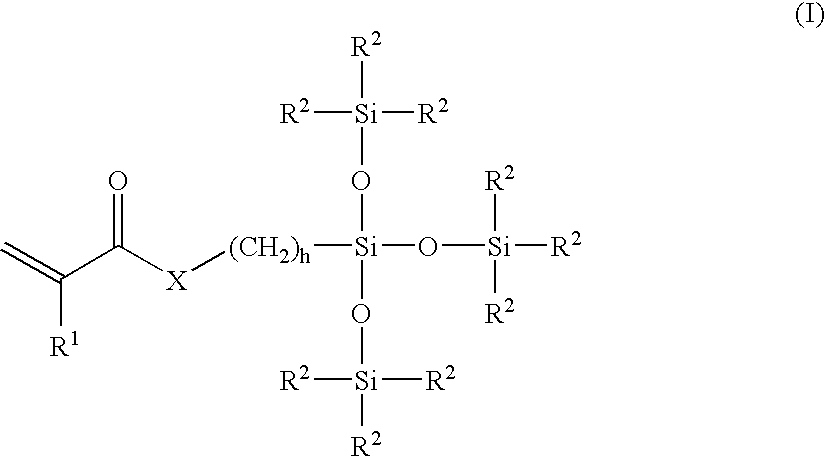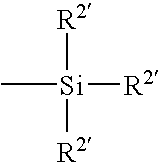Surface treatment of medical devices
a technology for medical devices and surfaces, applied in the field of surface treatment of medical devices, can solve the problems of eye discomfort or even inflammation, the surface of the lens can affect the susceptibility of the lens to deposition, and the wettability of the lens, so as to and improve the wettability of the medical devi
- Summary
- Abstract
- Description
- Claims
- Application Information
AI Technical Summary
Benefits of technology
Problems solved by technology
Method used
Image
Examples
example
[0060]Treatment of Contact Lenses With Plasma Followed by Poly(AcrylicAcid)
[0061]A monomer formulation prepared from polymerizable dialkyl siloxanes and a polymerizable fluoroalkyl siloxane was cast into contact lenses in a polypropylene mold by curing under ultraviolet (“UV”) light. The lenses were released from the molds using liquid nitrogen. The lenses were treated with different plasmas as grouped lots in a March FlexTrak plasma chamber at a loading of 50 lenses per lot in a chamber load, as shown below in Table 1. After completion of the plasma treatment, the lenses were extracted in a bath of isopropanol (“IPA”) for 4 hours, re-hydrated in water, and packaged into polypropylene blister packs in a coating solution as also shown below in Table 1.
TABLE 1PlasmaPackageLot #TreatmentPolymer CoatingSolution1NHxnone (PlasmaBBS1Control)2O2none (PlasmaBBSControl)3O21% PAAMOPS24Ammonia1% PAAMOPS1Borate-buffered saline (BBS)23-(N-morpholino)propanesulfonic acid (MOPS)3Poly (acrylic acid)...
PUM
| Property | Measurement | Unit |
|---|---|---|
| time | aaaaa | aaaaa |
| wettability | aaaaa | aaaaa |
| hydrophilic | aaaaa | aaaaa |
Abstract
Description
Claims
Application Information
 Login to View More
Login to View More - R&D
- Intellectual Property
- Life Sciences
- Materials
- Tech Scout
- Unparalleled Data Quality
- Higher Quality Content
- 60% Fewer Hallucinations
Browse by: Latest US Patents, China's latest patents, Technical Efficacy Thesaurus, Application Domain, Technology Topic, Popular Technical Reports.
© 2025 PatSnap. All rights reserved.Legal|Privacy policy|Modern Slavery Act Transparency Statement|Sitemap|About US| Contact US: help@patsnap.com



